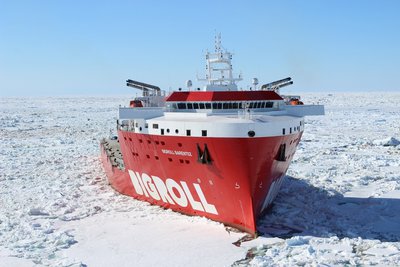9 Jan 2018
Opening up the northern sea route will “change the face of trade”
With the Arctic ice melting faster than ever before it is now just a matter of time until the northern sea route connecting Europe to Asia is open to shipping all year round.
And when this does occur it will have a substantial economic impact, according to a new WTI paper, ‘Melting Ice Caps and the Economic Impact of Opening the Northern Sea Route’, by Eddy Bekkers, Joseph Francois and Hugo Rojas-Romagosa.
Ships are already navigating the passage without the aid of ice-breakers for much of the year, and in the next two decades rapid ice melt should make that possible in the winter months too.
The scientific paper published in The Economic Journal predicts “remarkable shifts in trade flows between Asia and Europe, diversion of trade within Europe, heavy shipping traffic in the Arctic and a substantial drop in Suez traffic”.
“Projected shifts in trade also imply substantial pressure on an already threatened Arctic ecosystem,” it warns.
The Sea Ice Report Card of 13 December 2017 makes the progress of Arctic warming clear. The lowest winter maximum ice extent in the satellite record (1979-2017) occurred on 7 March 2017. The extent was 14.42 million km2, or 8 percent below the 1981-2010 average. This was the third straight year of a record low winter maximum.
Given this reality, the purpose of the economic paper was to show what we can expect to happen to global trade, according to co-author Joseph Francois.
“It’s a question of how long it takes until the ice is gone. But it looks like it’s going faster than we thought, so my gut feeling is that in 20 years or so we’re going to see much more trade going by this route,” says Professor Francois.
Major disruption
The opening up of the shipping route connecting East Asia with Northwestern Europe through the Arctic Ocean promises to be a major disruptor. Most trade goes by sea – in tonnage terms more than 90 percent – and the northern route is expected to cut roughly 30 to 40 percent off the time and distance between the continents. Since time is money, this makes it very attractive to shippers.
But it also means traditional shipping routes are likely to lose out. “We figure 8-10 percent of trade that goes through the Suez Canal won’t go that way anymore,” says Professor Francois. This means a substantial loss of foreign exchange for the Egyptians.
Other losers will be Singapore and the countries around the Malacca Straits that currently handle a large share of global trade. It also spells bad news for the recently renovated Panama Canal if traders opt for the northern rather than the southern sea route for accessing the East Coast of North America.
Southern and eastern European firms will find themselves having to compete more with East Asian firms. In North America, there will be more competition on the East Coast as goods start to arrive there instead of being landed in Los Angeles or other ports on the western seaboard.
“It changes geopolitical balances in terms of how important certain countries are, and it changes the extent to which some industries are competing with others,” sums up co-author Francois.
The ease of trade will also magnify the effect of the trade agreements between the European Union and South Korea and the EU and Japan, according to the economist.
Environmental pressure
The impact won’t all be economic. An already fragile ecosystem will come under further pressure if thousands of ships ply the Arctic waters.
“It’s a minor catastrophe on top of a big one,” says Professor Francois, with the big catastrophe being the well documented melting of the ice that will make year-round navigation possible in the first place.
But shipping is only part of the picture, he says. “It’s going to be really disruptive to the whole area. It means mining and more oil extraction, which will heat up the planet even more. It also means yet more geopolitical manoeuvring.”
“At this point, the ecological damage is well under way. Assuming we proceed on a ‘business as usual’ policy pathway, at some point the ice will be gone.”
Further info
The Economic Journal


